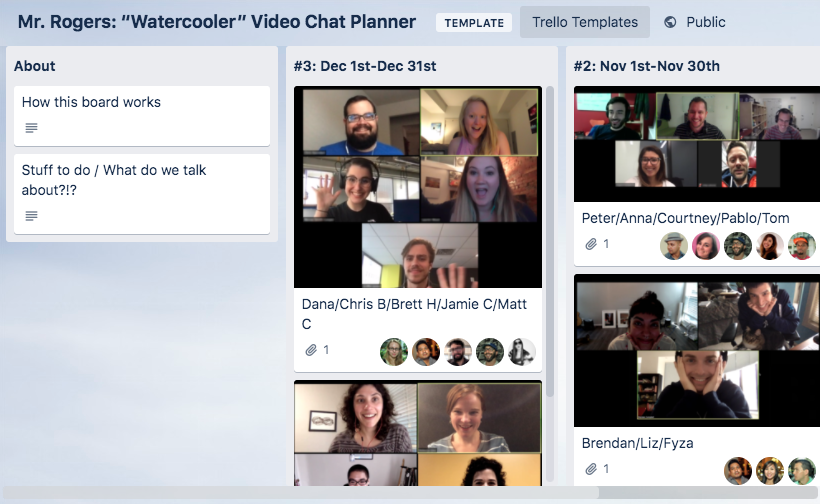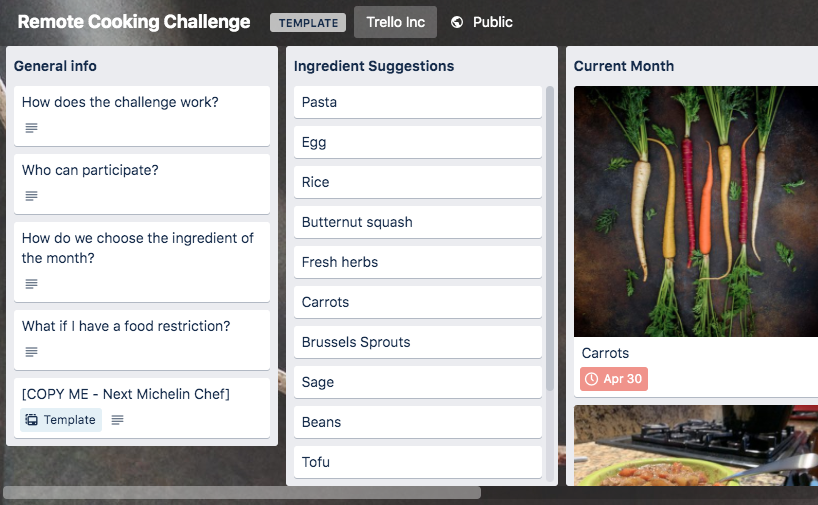Team bonding activities get a bad rap for being awkward, time-wasting, and a level of cringe-worthy that only Michael Scott from The Office could compete with. Despite its reputation for being, well, lame, team bonding is actually super important for building trust, rapport, and engagement on your team.
Still doubtful?
According to Museum Hack, companies who invest in team building see 10x returns in employee loyalty, innovation, and work ethic.
Maybe those Michael Scott moments are worth it after all. With a bit of skill and a brush of luck, we’re willing to bet certain team bonding activities can even err on the side of fun.
Let’s take the cringe factor down a notch and dive into this giant round-up of non-work related bonding activities that your remote team will actually want to participate in.

Why Bother With Team Bonding?
Company leaders are faced with many decisions that directly affect their return on investment. While many leaders invest in training, digital tools, and processes, many forget to invest time into building a culture that’s palpable — especially in a remote environment.
According to Keka, 50% of positive changes in communication patterns within a workplace can be accredited to social interaction outside of the workplace. In other words, positive non-work related conversations help strengthen bonds and communication between employees when they later talk about work.
Consider the layout of a remote team and the lack of opportunity for outings and in-person interactions, and you’ll see why team bonding is right up there with success factors like role clarity and great leadership.
There are even more benefits to reap from bonding. Dwain Richardson from Corporate Challenge Events states that team building activities:
- Improve morale
- Boost teamwork skills
- Improve communication
- Instill respect between team members
- Develop trust
- Uncover leadership qualities
- Identify strengths and weaknesses
- Reinforce company values and mission
Let’s get to it then. Here are some quick games as well as longer-term activities that will be sure to cultivate connections, spark conversations, and keep the eye-rolls to a minimum.
12 Virtual Team Bonding Activities To Try With Your Remote Team
Here are some quick and ongoing virtual bonding activities to keep spirits high all week and year long with your distributed team.
1. Would You Rather? (PG-Version, Of Course)
This game can be as silly or as serious as you make it, and the premise is simple. Hop on a video call, prepare questions that are thought-provoking, and have people choose between them.
Then, go around in a virtual circle and give your answers, and more importantly, why each person chose the one they did.
Here are some fun questions to get you started:
- Would you rather travel back in time or to the future?
- Would you rather explore a new planet or the depths of the ocean?
- Would you rather see the future or change the past?
- Would you rather be able to run incredibly fast or jump incredibly high?
- Would you rather be able to fly or able to breathe underwater?
- Would you rather know the history of every object you touch or be able to talk to animals?
Through this game, you can start to learn the personalities and interests of everyone on your team. You may be surprised to learn how many people have shared love for 18th century history!
2. Rose vs. Thorn
Context is important for understanding where your coworkers are coming from—this empathetic approach to collaboration is crucial on remote teams. If someone is having a bad week or an exceptionally great week, this activity can help shed light on things going on in a person’s life—both wins and losses.
During a Friday video meeting, ask each person to share (with respect to boundaries) a non-work related thorn in their week, as well as a rose.
Thorns symbolize something during the week that wasn’t so great—like spilling their coffee or maybe missing a deadline. A rose symbolizes something positive—like putting in an offer on a new house or learning a new skill.
This simple activity builds trust and can help connect the dots in instances where team members need extra support (or celebration!).
3. Quiplash
Although this activity isn’t free, it’s pretty darn cheap. For less than $10 your team can purchase Quiplash to play on a phone, tablet, or computer.
At the start of each game, use your device to answer simple prompts like these:
- Something you’d be surprised to see a donkey do
- A double rainbow doesn’t have gold at the end of it.
Instead, it has ______. - A better name for France
There are no rules or correct answers. You just say whatever witty response comes to mind! Answers are pitted against other players’ in a head-to-head battle. Then each player votes on their favorite answer to come up with the winner for that round. The person with the most favorited answers wins!
This activity is a great way to get to know your team members and discover unexpected facts about each of them.
To play this game, simply have each team member think of two interesting facts and one lie about themselves. For instance:
- I have four toes on my right foot. (Lie)
- I had a pet chipmunk as a child. (Truth)
- I don’t like pizza. (Truth)
Then, everyone on the team can discuss to vote on which statement they believe to be the lie, and then the person reveals. The more outlandish each statement, the better!
4. Two Truths And A Lie
To host a virtual trivia game, you will need to select a host for the game to gather trivia questions, answers, and keep track of points throughout the game.
Once the questions and answers are gathered, split the team into groups of at least two people and give teams two minutes to come up with a team name.
Decide on the allotted amount of time for teams to brainstorm their answers (usually somewhere between 1-3 minutes). Choose an instant messaging tool, like Slack, to use at the same time as the video call so team members can chat privately to discuss their answers.
The teams with the correct answer to each question gain a point! The first team to get to 10 points wins.
5. Virtual Trivia
To host a virtual trivia game, you will need to select a host for the game to gather trivia questions, answers, and keep track of points throughout the game. Once the questions and answers are gathered, split the team into groups of at least two people and give teams two minutes to come up with a team name.
Decide on the allotted amount of time for teams to brainstorm their answers (usually somewhere between 1-3 minutes). Choose an instant messaging tool, like Slack, to use at the same time as the video call so team members can chat privately to discuss their answers.
The teams with the correct answer to each question gain a point! The first team to get to 10 points wins.

6. Craft Party
When you’re on calls and chats on a computer screen all day, it doesn’t exactly feel calming to hang out with your team via yet another video call—that’s where crafting comes in!
To create a successful craft sesh with your crew, you’ll need: crafting tools, clear instructions, and some crafty courage. Choosing a simple craft project is the fun part, however, logistically, getting all craft supplies to your teammates (on time) may prove to be tricky.
At one of Trello’s most recent team bonding sessions, we settled on a craft kit by The Neon Tea Party. The process began by creating a Trello card and having each teammate post their mailing address. Once everyone had input their mailing address, our activity coordinator ensured that a craft kit was then mailed to each member.
Those who live abroad or are in areas where shipping doesn’t always come in a timely manner had the options of buying yarn and other items themselves.
Once every team member has their equipment, the day of the crafting activity becomes even smoother with a wonderful instructor and video call in tow. Using your hands and creating something new with your team makes bonds (and your crafty skills) stronger.

7. Book Club
Virtually gather with fellow bookworms biweekly, monthly—whatever suits team members best to discuss your latest read! This is a great way to bond over an agreed upon book, discuss questions, favorite characters, and perspectives outside of work.
We have a Trello Book Club Template to get you started!

8. Mr. Rogers
Remote teams face unique challenges, one of them being the lack of water-cooler chats and passings-by in the office hallway. If you’re not directly working with someone on a project, the likelihood of forming a connection with them is small.
That’s why many teams are adopting weekly Mr. Rogers ‘coffee dates’ so they can get to know their neighbors. Team members hop on a video call with another team member that they don’t work closely with for 15-30 minutes. The only rule? No work talk!
Using our Mr. Rogers Video Chat Planner Board, your team can easily organize upcoming chats, and document them in a fun way.

9. Weekly Team Lunch
This one’s easy. Just gather your team mates via video for a weekly lunch at a set time. Try to keep the work talk to a minimum, and enjoy!
10. Virtual Birthday Parties
Cue the cake and candles! Any reason to celebrate with the team is a good one, and birthdays are no exception. Assign a few people on the team to keep track of everyone’s birthdays throughout the year, and find a time to celebrate each team member via video!
Take it one step further by having everyone on the team chip in for a small gift and have it mailed to them!

11. Annual Retreat Planning
Just because your team may not be able to get together in person weekly or even monthly, many distributed teams enjoy planning a yearly retreat or off-site. Though the final say may be up to company leaders who take into account budget and travel logistics, it’s still fun to dream about a week-long yacht ride in Fiji, right?
Pro-tip: Create a copy of our Offsite Planning Template Board for your remote team to keep track of locations, excursions, restaurant options, and flight prices.

12. Water-cooler Channels On Slack
Things don’t have to be ‘all work, no play’. With designated Slack channels for non-work related banter, team members will feel more comfortable sending memes or funny articles.
These channels should have a theme and some popular ones include:
- Pets
- Kudos
- Inspiration
Pro-tip: Use the Slack Power-Up for easier access to those lighthearted convos.
13. Remote Team Cooking Challenge
Last but not least is the Remote Team Cooking Challenge! This is a very friendly challenge—nobody loses, everybody wins!
How it works:
- Use the free template to organize your team, ingredients, and timeline
- Each month have the team vote on an ingredient of the month. Participants have until the end of the month to cook a dish that includes it.
- Cook with the month’s ingredient. It can be raw, cooked, boiled, baked, etc. There are no restrictions.
- Once done, add a picture (or as many as you want) of the dish and the recipe to your card. Feel free to share your thoughts, experience, tips, etc!
- At the end of the month, vote for different dishes!

Bond Without Barriers With Your Remote Team
With these activities, your remote team will never face a shortage of laughs and virtual memories. By closing physical gaps through virtual solutions, your team will naturally start to communicate and collaborate even more seamlessly than before.
Still feeling awkward? Learn how to master the art of video meetings and say goodbye to those totally cheesy Michael Scott moments.







































